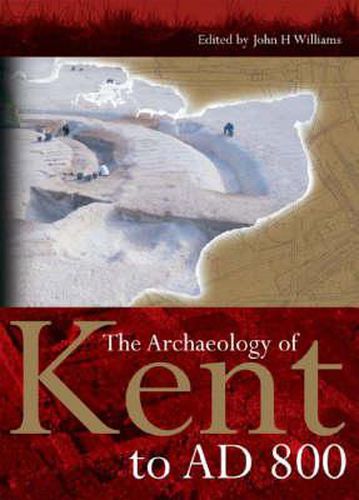Readings Newsletter
Become a Readings Member to make your shopping experience even easier.
Sign in or sign up for free!
You’re not far away from qualifying for FREE standard shipping within Australia
You’ve qualified for FREE standard shipping within Australia
The cart is loading…






Kent’s proximity to the European mainland has meant that it has always had a special relationship with its continental neighbours. At times this has been a positive force, with Kent a conduit for trade and new ideas, but on otheroccasions the white cliffs of Dover have symbolised defiance, with Kent being in the front line in the defence of England. The result has been an extremely rich archaeological heritage from Palaeolithic times onwards. The openingup of the Channel Tunnel and the construction of the associated high-speed railway line linking England and France, together with major development activity associated with an agenda for regeneration and economic growth, has resulted in unprecedented archaeological activity which has revolutionised our understanding of Kent’s earlier past. The contributors to this volume, all of whom have specialist research interests in Kent, have combined established wisdom with the fresh information from recent work to create a new and exciting story.
Contributors: TIMOTHY CHAMPION, MARTIN MILLETT, MARTIN WELCH AND FRANCIS WENBAN-SMITH.
$9.00 standard shipping within Australia
FREE standard shipping within Australia for orders over $100.00
Express & International shipping calculated at checkout
Kent’s proximity to the European mainland has meant that it has always had a special relationship with its continental neighbours. At times this has been a positive force, with Kent a conduit for trade and new ideas, but on otheroccasions the white cliffs of Dover have symbolised defiance, with Kent being in the front line in the defence of England. The result has been an extremely rich archaeological heritage from Palaeolithic times onwards. The openingup of the Channel Tunnel and the construction of the associated high-speed railway line linking England and France, together with major development activity associated with an agenda for regeneration and economic growth, has resulted in unprecedented archaeological activity which has revolutionised our understanding of Kent’s earlier past. The contributors to this volume, all of whom have specialist research interests in Kent, have combined established wisdom with the fresh information from recent work to create a new and exciting story.
Contributors: TIMOTHY CHAMPION, MARTIN MILLETT, MARTIN WELCH AND FRANCIS WENBAN-SMITH.